
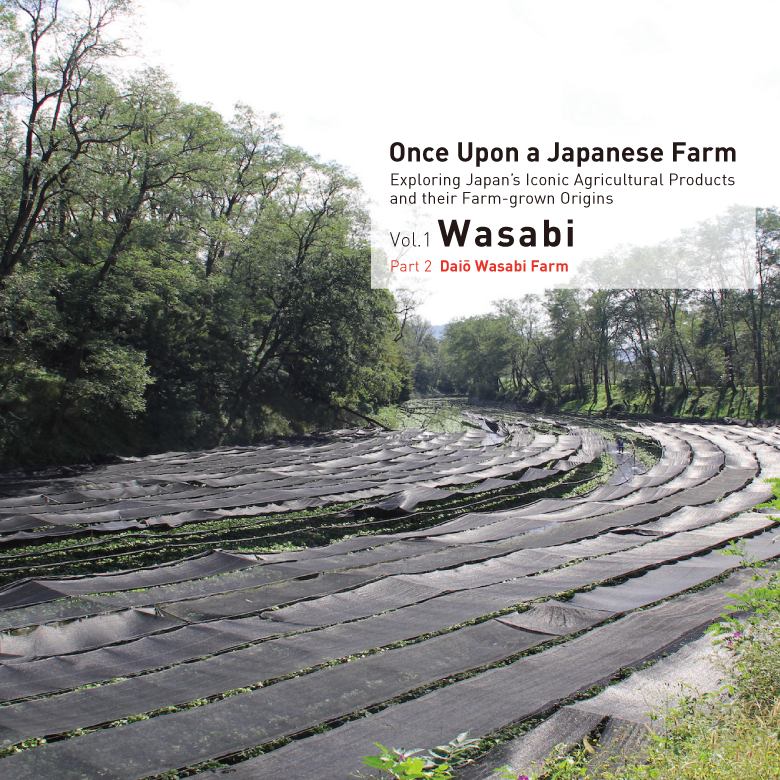
The management of plant resources in Japan can be traced back across a span of some 10,000 years. Agricultural food production in Japan has traditionally been dominated by the cultivation of grains and vegetables, with animal husbandry being a relatively minor and in many parts of the country more recent feature of the agricultural landscape. In this series we explore iconic Japanese agricultural products including not only famous food ingredients, but also other products cultivated from the land such as fibres, dyes, resins and forest products, with an emphasis on quality and tradition.
Photos and Text : Judy Evans
Keyword : Real wasabi / Daiō Wasabi Farm
Daiō Wasabi Farm – Japan’s Largest Wasabi Farm
Pristine waterways and cool crystal clear springs – perfect conditions for wasabi
It is late in the morning when we arrive at Daiō Wasabi Farm; a clear October day with the sun already high in the sky. Passing through the main entrance, the first impression is the ubiquitous sound of trickling water. The source of this abundant water supply is the Saigawa river, which originates at Mt Yarigatake and flows north to meet the Chikuma River in Nagano City. From there the waterway become the mighty Shinano River, flowing to the ocean through Niigata City on the Sea of Japan coast.
In fact, Daiō Wasabi is ideally located at the confluence of the Saigawa and Hotaka rivers. The gravelly alluvial fan here is full of freshwater springs. The waterways are a complex braided river system where the fast-flowing water from the mountains carves multiple channels through the shingly plain, before converging and flowing north. A number of these channels flow through and around the 15-hectare Daiō Wasabi property, much of which was undeveloped wetland until just over 100 years ago.

One of Japan’s “Top 100” water sources
There is certainly something very special about the water flowing through Daiō Wasabi Farm. Aside from its remarkable clarity, its slightly blue hue attests to its purity. This excellent water quality has not gone unrecognised. In 1985, the Japanese Ministry of the Environment selected one hundred water sources from all over the country that met strict selection criteria, limited not only to excellent water quality but also to historical value and environmental preservation efforts on the part of the local people. The waters that nourish and sustain Daiō Wasabi were selected for this list and designated as the Azumino Wasabida Yūsui-gun (Springs of the Azumino Wasabi Fields). Visitors line up to taste this renowned water at a well and drinking fountain in the centre of the farm, making sure to also wet the head of the frog statue next to the well, for good luck.
Long-term vision and massive effort yield outstanding results
Beginning in 1917 with the acquisition of multiple tiny parcels of land from numerous owners scattered across five different villages, it took the first-generation pioneers of Daiō Wasabi over 20 years to establish the wasabi ‘fields’ we see today. The work of clearing vegetation, tapping into the springs, digging the channels and landscaping the higher ground was long and arduous, and all done without modern earthmoving machinery. These cool, spring-fed channels with their shingle streambeds are perfect for wasabi, not only because the cold, slightly alkaline water is the ideal temperature, but also because wasabi thrives in gravel, since the roots of the plant cannot obtain sufficient oxygen if grown in a muddy substrate.
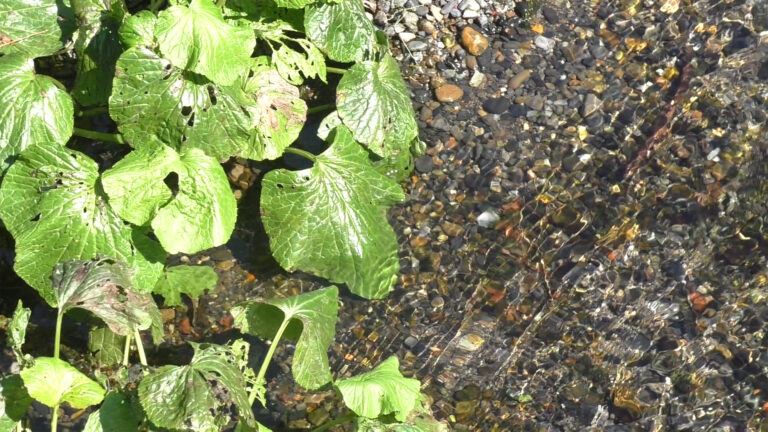
More wasabi fields and a propagation area were added later, as were the shops and restaurants onsite, which have been rebuilt and updated over the intervening decades. The result is a landscaped, park-like setting with pathways and bridges that enable visitors to circulate around and over the series of interconnected channels containing the gravel wasabi beds. Another path draws visitors along the tree-lined banks of the one of the pristine channels of the braided Saigawa River. This is where the old-fashioned wooden waterwheels that feature in acclaimed director Akira Kurosawa’s 1990 film, Dreams, can be found. The best views of the waterwheels are had from the river itself – perhaps from one of the clear-bottom boat rides that run from April through October.
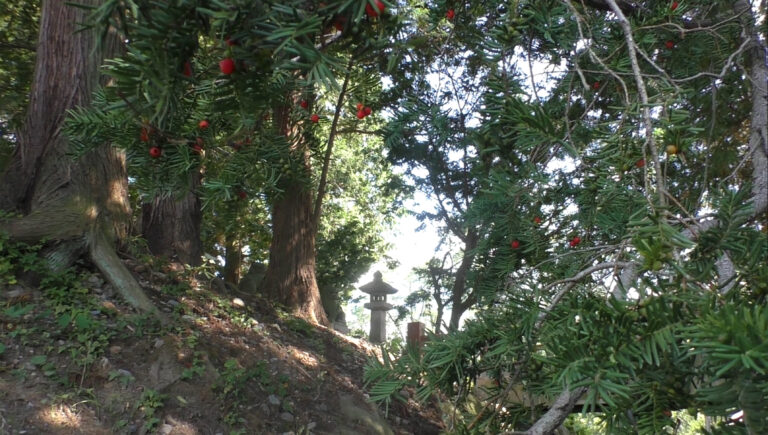
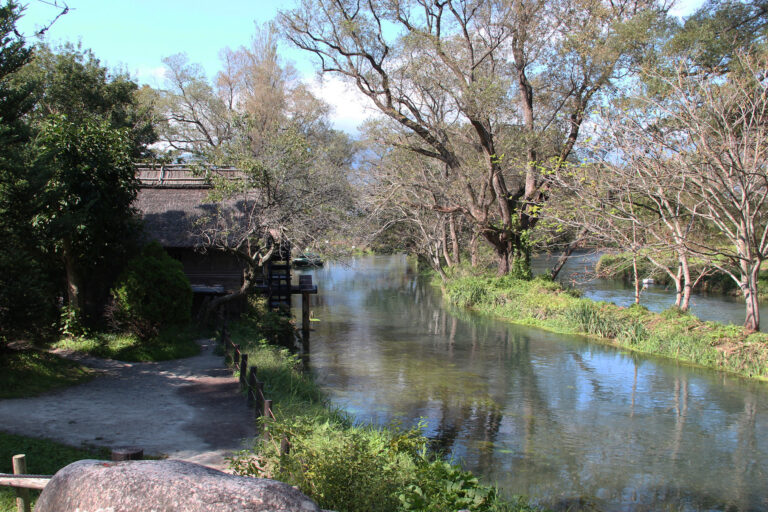
While we visit, workers at the farm are undertaking the time-consuming work of rolling up and securing the shade cloth that has protected the lush, dinner plate-sized leaves of the wasabi from the harsh sunlight all summer. This offers us better views of the wasabi beds, but even when the shade cloth is up, it is above head height and there are plenty of spots where you can get right down to the water’s edge to see the wasabi from under its protective canopy.
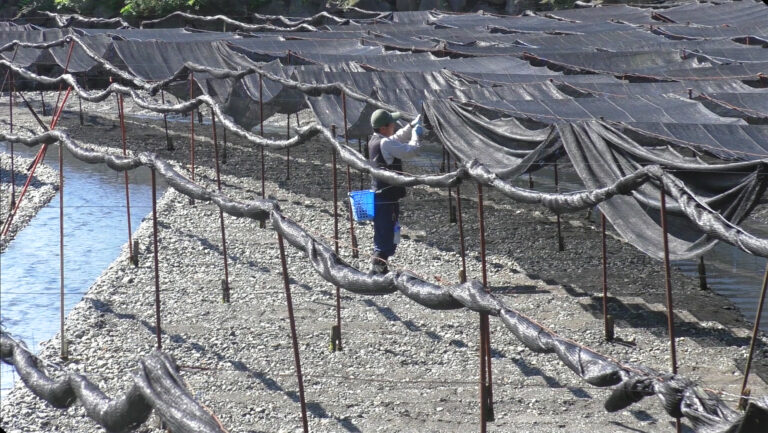
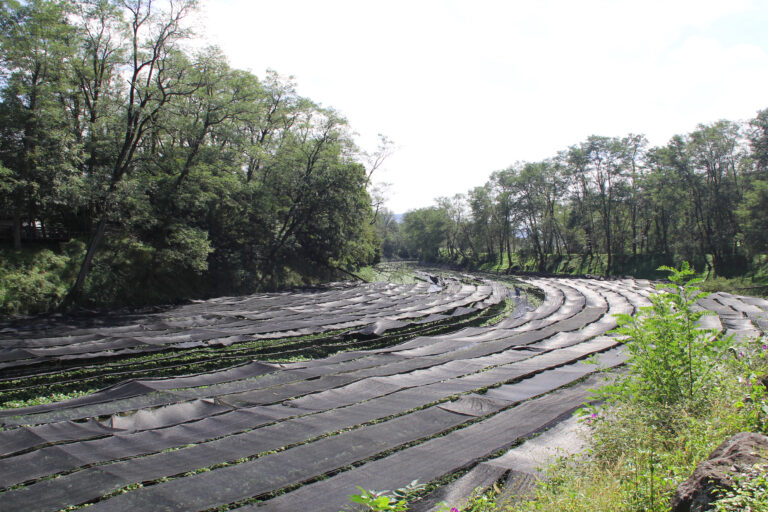
A mind-boggling array of wasabi products
Given the severe flooding that sometimes occurs in parts of Japan, I wonder how floodwaters might affect the wasabi crops. I am reassured to learn that although the waters have at times risen above the tops of the wasabi plants and have even uprooted a few plants, the results have never been catastrophic.
This must be a relief for wasabi fans, as Daiō Wasabi Farm is Japan’s largest single producer of wasabi. The onsite farm shops stock a mind-boggling array of wasabi products, from wasabi paste to pickles, miso and of course, fresh wasabi stems. The fresh wasabi is extraordinarily reasonably priced, ranging on the day of our visit from 500 yen for a small stem to 1,500 yen for a large stem.
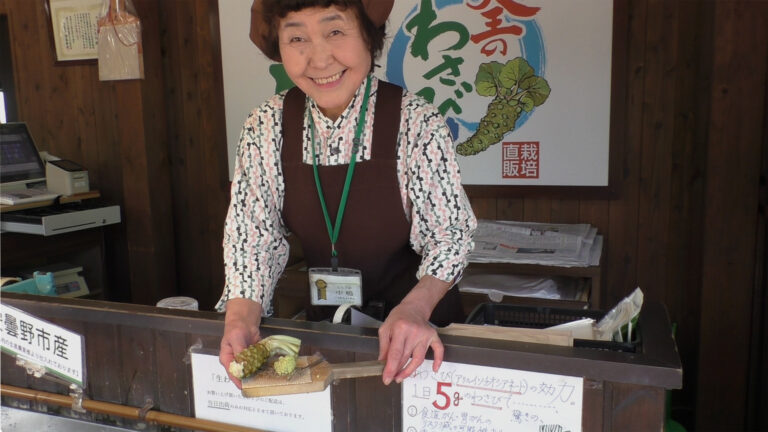
Freshly harvested wasabi has a short shelf life so there is little point in buying more than you need. In fact, once grated it only takes around fifteen minutes’ exposure to air for the volatile compounds to evaporate and the flavour to dissipate. This is why fresh wasabi should only be grated immediately before eating, and is also why sushi chefs place wasabi between the rice and the fish, so as to limit its exposure to air and preserve its impact.
Restaurants and a takeout stand dotted across the farm cater to visitors’ appetites for wasabi-inspired cuisine, with tempting offerings like wasabi noodles and the delicious wasabi croquettes, served wrapped in a wasabi leaf (spicy!) with wasabi mayonnaise.
However, no visit to Daiō Wasabi would be complete without trying the wasabi soft-serve icecream – the perfect end to our visit.
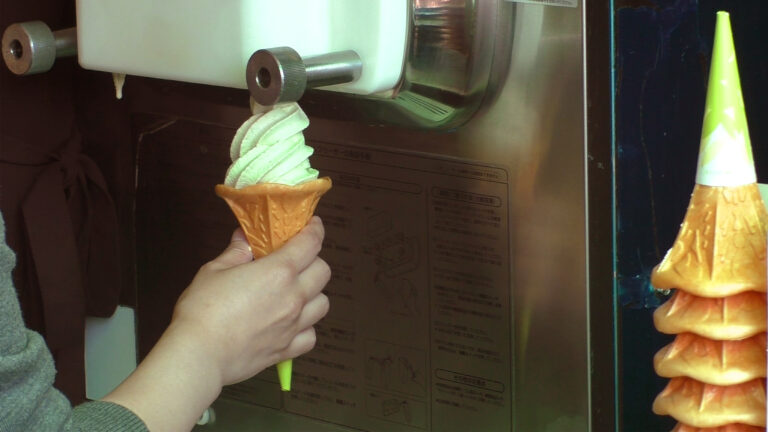
Daiō Wasabi Farm
Hours: 09:00-17:20 from Mar. to Oct. and 09:00-16:30 from Nov. to Feb.
Days: Open daily all year round.
Admission: Entry to the farm is free. (Charges apply for boat rides, cooking classes and workshops.)
Facilities: Restaurants; shops and stalls; restrooms; information desk (with English pamphlet); indoor and outdoor seating areas; ample free parking; landscaped grounds and pathways.
Address: Hotaka 3640, Azumino City, Nagano Prefecture, Japan
Phone: 0263-82-2118 (in Japanese)
Access
By car: Proceed north about 10 mins. from Azumino Interchange on the Nagano Expressway.
By train: From Hotaka Station (JR Ōito Line), 10 min by taxi.








